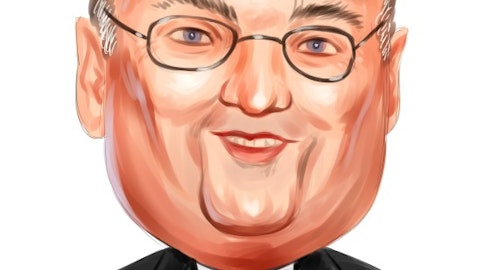With rampant consolidation across the airline industry, has the tide changed for its companies? In the past, airline stocks have traded in lockstep with oil prices, generally struggling to break-even and going through bankruptcy to stay in existence, but consolidation and disciplined industry-wide capacity levels could help change this.
We believe that several funds are now looking to make moves in the airline industry, potentially on the hopes that a more consolidated industry will be able to turn a profit. Year to date the AMEX Oil Index is up only 2%, while the AMEX Airline Index is up 17%.
The first company funds believe in is Southwest Airlines Co. (NYSE:LUV). Southwest announced 2Q results that put revenue passenger miles unchanged, with a slight increase in available seat miles. The number of trips flown declined by 1.8%, while the average trip length fell 1%. However, revenue passengers carried – a measure of passenger volume – grew modestly to 10.2 million. The company still estimates to spend $500 million to fully integrate the Air Tran acquisition.
Top names, the two firms owning the largest number of shares, are D.E. Shaw and Jim Simons, owning 5.5 million and 4.5 million, respectively. Israel Englander took his stake to 1.8 million shares, up 29% from 1Q. New positions were made by George Soros and Arrowstreet Capital, with modest positions held by Steven Cohen, Bill Miller and Ray Dalio (See all funds owning Southwest here).
Delta Air Lines, Inc. (NYSE:DAL) earnings estimates put next year’s EPS growth at 29%. Delta trades at a trailing P/E of 8 and a forward P/E of 3.5. Revenues are expected to rise 8% for 2012, coupled with a 1% capacity decrease and 1% rise in passenger load factor. This year’s total operating EPS is expected to come in at $2.45, up from the $1.41 it reported in 2011.
Seminole Capital, who upped their 1Q position by 123%, and John Griffin of Blue Ridge Capital were just two of the top names long Delta as of 2Q. Eighteen of the funds we track took new positions, including George Soros. The company’s CFO is also excited about Delta’s prospects.
Alaska Air Group, Inc. (NYSE:ALK) is expected to increase revenues about 9% in 2012, after advancing 14% in 2011. Capacity is expected to climb 3% in 2012, with yields advancing 6%, and the passenger load factor being largely flat. EPS is expected to come in at $4.98 for 2012, a 27% increase over 2011, while 2013 EPS is expected to be 15% greater than 2012’s totals. The company’s shares trade much more in line with its peers versus the past, although its current P/S at 0.6 is the highest of the other four airline stocks mentioned.
Jim Simons was the top fund manager invested in the company as of 2Q, owning the most shares of the funds we track at 4 million.Other investors included AQR Capital, Arrowstreet Capital, D.E. Shaw and Steven Cohen. Although hedge fund action appeared positive, insiders have been selling.
US Airways Group, Inc. (NYSE:LCC) is currently pursuing a merger with AMR Corp.’s American Airlines. This would give US Airways a stronger international presence. US Airways’s capacity is expected to rise 1% in 2012, with EPS expected to grow 22%. The company beat 2Q EPS estimates of $1.56 by posting actual EPS of $1.61. US Airways trades at a trailing P/E of 4.2 and a forward P/E of 3.5. In 2Q, Jim Simons upped his stake 64%, while Israel Englander and George Soros took new stakes in US Airways.
JetBlue Airways Corporation (NASDAQ:JBLU) had 2Q traffic that put revenue passenger miles up 7% year-over-year. The airline load factor – usage of an airline’s passenger carry capacity – was up 1.3% to 87.2%. The company has one of the younger fleets in the airline industry. JetBlue’s 2Q results were in-line with estimates and the company is expected to grow YOY EPS by 13%. The company trades at a trailing P/E of 12 and a forward P/E of 8.
Jim Simons is again the top shareholder of the funds we track, this time in JetBlue for 6.7 million shares. Meanwhile, D.E. Shaw and Israel Englander increased their positions, and Chuck Royce of Royce & Associates took a new position in the company. On the other hand, the insider sales have been robust in JetBlue of late.
We see improving demand for flights despite the still sluggish economy, as many airlines have reduced capacity to meet reduced demand, which should also prop up passenger fares. Total revenue passenger miles (RPMs) rose 0.7% in 2011, with available seat miles rising 1.0%. Southwest had some of the highest interest from funds, but also trades at the highest P/E amongst its peers at 20. The two airlines stocks that look cheap on a valuation basis, Delta and US Airways, both have mergers to finish integrating or are in the process of negotiating mergers.






